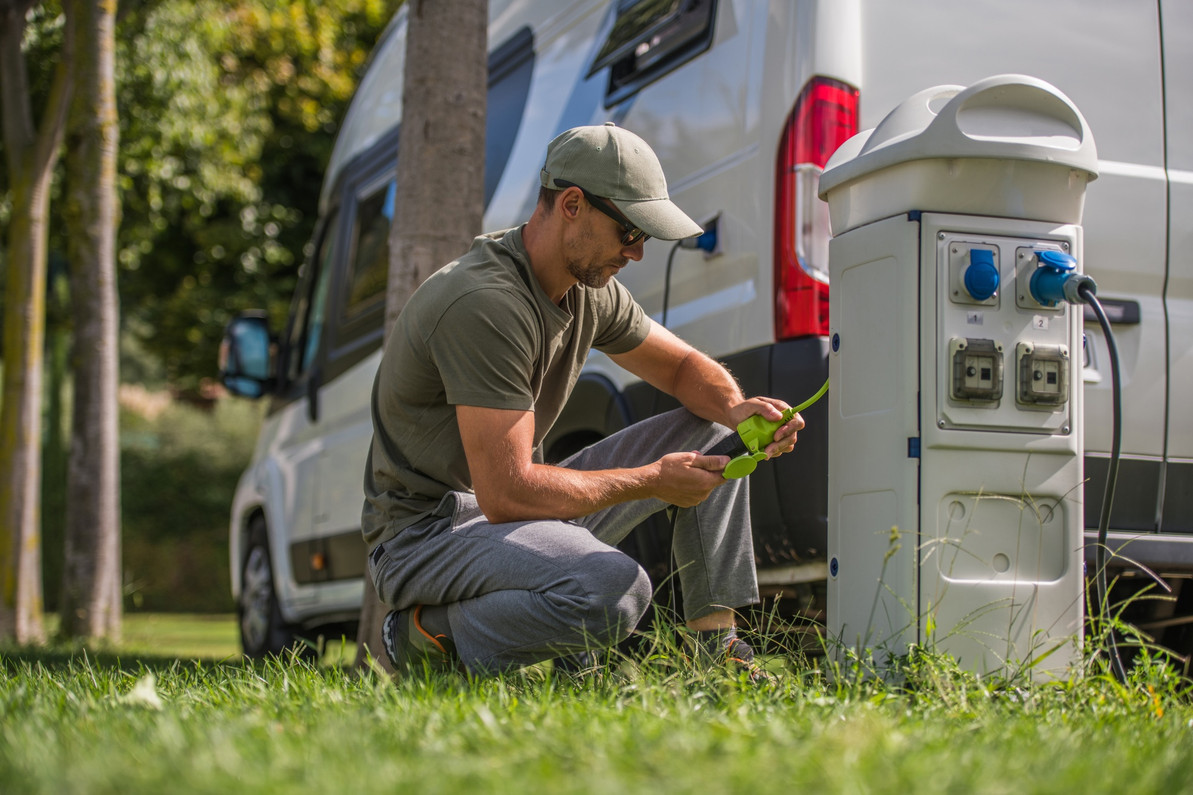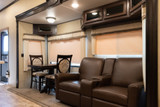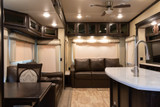RV Electrical System Basics
The fundamentals of electricity and how it works to power our everyday lives are complex and remain a mystery to many. But as an RV owner, it is in your best interest to understand the basics of electricity to efficiently manage power and avoid damage to your rig or harm to yourself.
Unlike your house, which has a direct and permanent connection to the electrical grid for power, your RV must utilize various electrical systems to power your rig and home appliances, regardless of whether you have a shore power connection. Later in this article, we will discuss each of your RV’s three electrical systems in more detail. For now, just know that your RV relies on multiple electrical systems so that it can operate as both a functional living space and reliable motor vehicle, wherever you may take it.
Understanding the Basics of Electricity

Electricity can be challenging to understand because we cannot see it. It does, however, behave similarly to water in a hose. This common analogy compares water to charged electrical particles, water flow rate to (electric) current, water pressure to voltage, and sand in the hose to resistance. Power, measured in watts, is comparable to the total volume of water in a bucket if it had caught all the water from the hose.
AC vs. DC Power
We briefly mentioned above that current is similar to the water flow rate in a hose, although, with electricity, there are two specific types of currents. DC stands for
direct current and simply means that the electrical particles can only flow through the circuit in one direction. Batteries supply DC power. 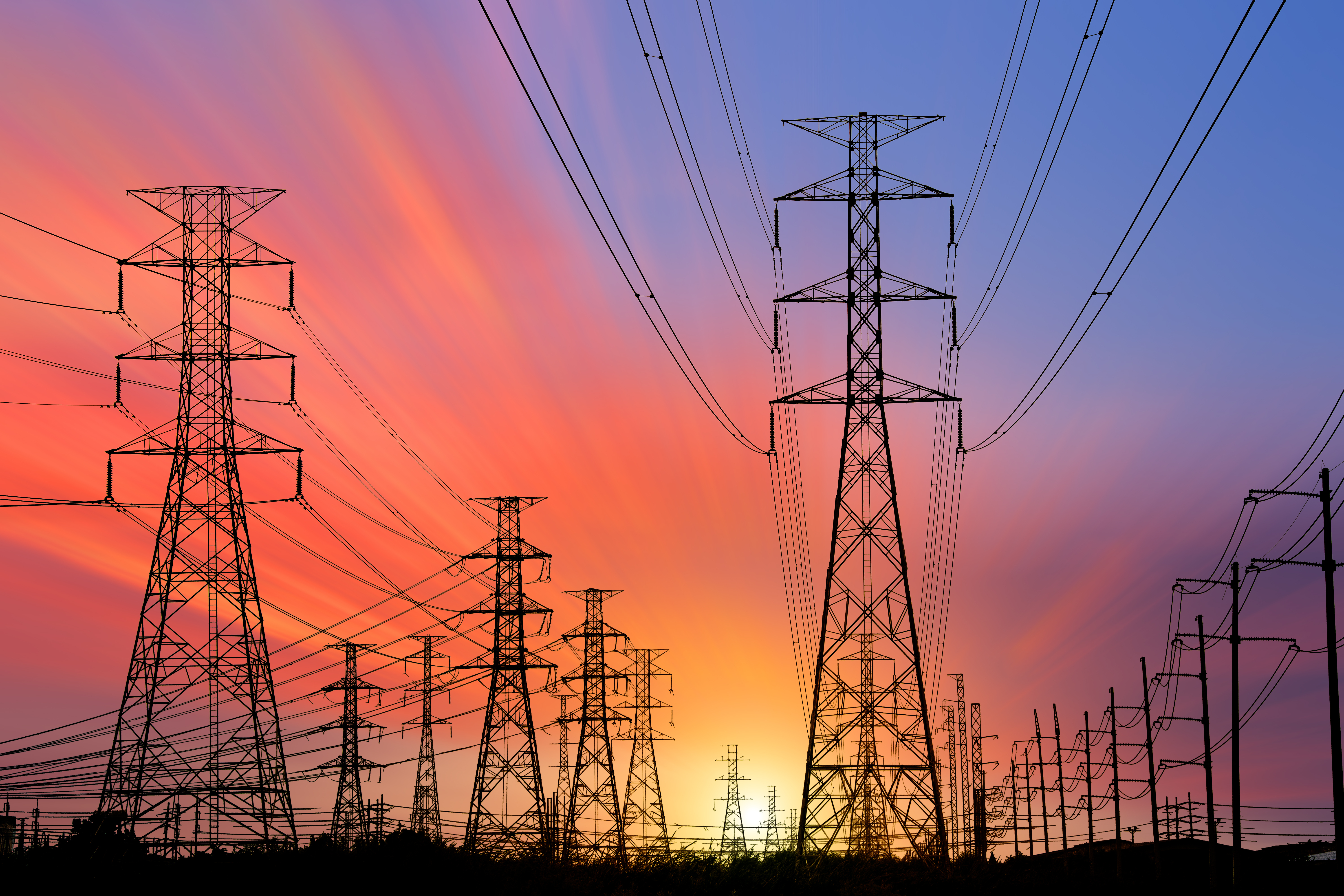 AC stands for alternating current and is aptly named because the current and voltage are alternating levels multiple times per second. How exactly this provides electrical power is pretty complicated. Still, this method can transport energy over long distances much more efficiently than DC power which is a significant reason for its widespread use in houses and the electrical grid.
AC stands for alternating current and is aptly named because the current and voltage are alternating levels multiple times per second. How exactly this provides electrical power is pretty complicated. Still, this method can transport energy over long distances much more efficiently than DC power which is a significant reason for its widespread use in houses and the electrical grid.
Your RV relies on AC and DC systems for various functions. Read on for a breakdown of the electrical systems in your RV, from power type to connected appliances and systems.
RV Electrical Systems
An RV is quite literally a home on wheels, so it should make sense that it contains both house electrical circuitry and a car battery. Your RV has two 12-volt DC systems and one 120-volt AC system.
12VDC Chassis System
“Chassis” is an automotive term that collectively describes all parts of a motor vehicle minus the body. This includes, but is not limited to, the main support frame, engine & drivetrain, suspension system, brakes, wheels, and fuel tank. The chassis is the backbone of any vehicle, including your RV. A 12V DC battery is used to provide a high amperage output for ignition, then slowly recharges as the engine runs. The chassis battery can be thought of as your RVs car battery.
Chassis System
- Supplies power to start the engine
12VDC Coach System
The coach battery system in your RV is responsible for powering lights, vent fans, the freshwater pump, and other small accessories in the living space. While the coach battery system is separate from the chassis battery system, both are charged by the engine as it is running. The 12VDC coach system can be used when the RV is driven but is used more often when parked.
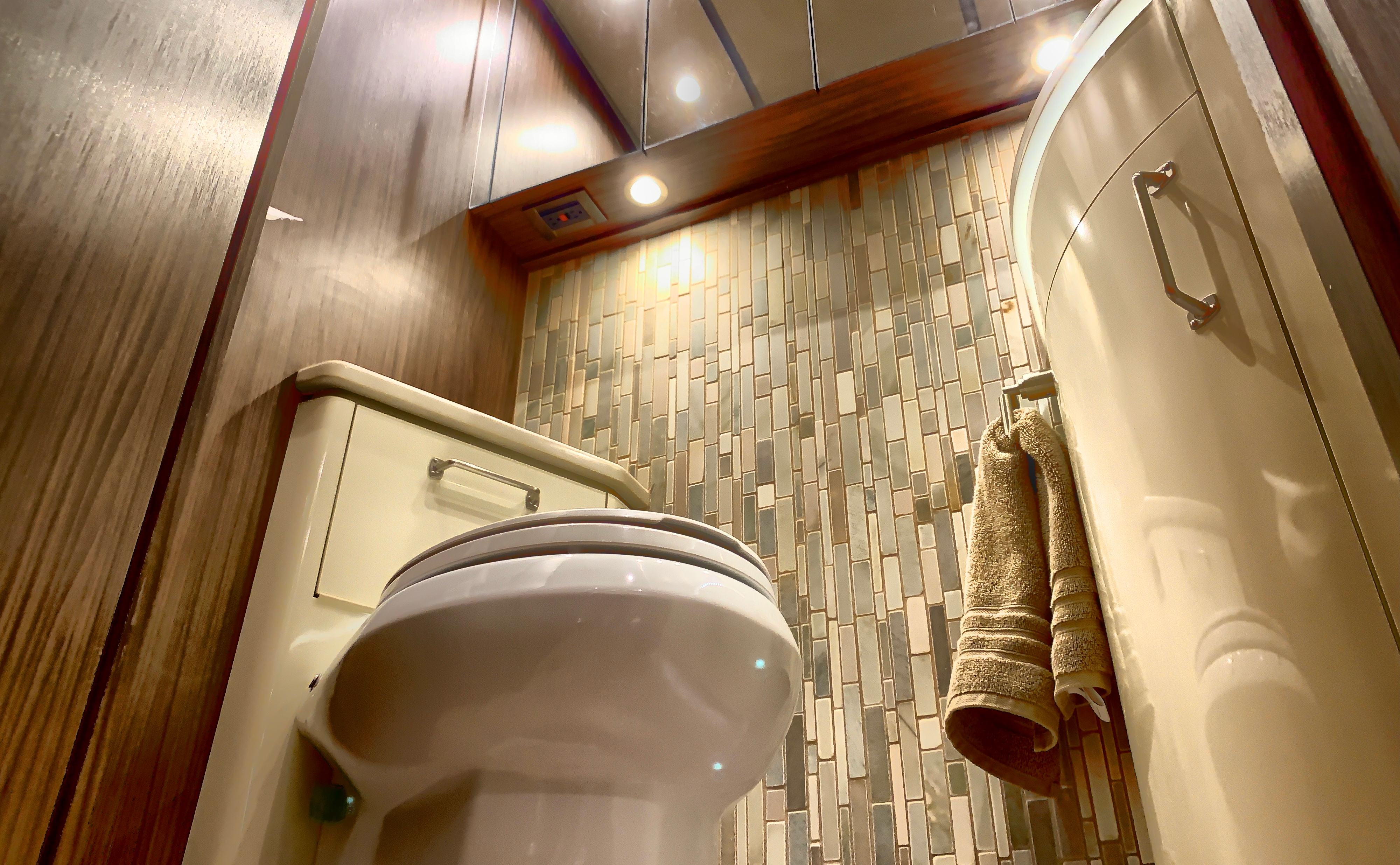
Examples of Coach System Components*
- Interior lighting
- Interior fans
- Fresh water pump
- Hard-wired safety detectors, such as carbon monoxide detectors and propane gas detectors
- Slideouts
- Automated jacks
- Etc.
120VAC House System
RVs have a 120V AC electrical system to support larger items, such as air conditioners, water heaters, and microwaves, which is identical to the household electricity in your sticks ‘n’ bricks home. The wall sockets and circuit breakers used in your rig are very similar to those used in your house to provide access to electricity as well as protect your circuitry from damage. When you are hooked up to shore power at the RV campground, you receive AC power for your house system. The power supply from shore power will also run through a converter to charge and power the DC batteries mentioned above.
Examples of House System Components*
- Wall outlets
- Air conditioner(s)
- Microwave
- Television
- Refrigerator
- Etc.
*Some appliances and features are available in both AC and DC powered options and vary by the manufacturer depending on anticipated uses.
Available Power
RVs are designed to function under limited power conditions when not being driven. Through the use of various electrical systems, RVs can utilize available power through direct hookups, as well as store and generate energy. However, it is up to the RV operator to manage the use of that limited power. This is a daunting task for new RV owners, but ask anyone with a few seasons of RVing under their belt, and they’ll tell you it’s no big deal!
In order to manage limited power, you must know how many watts of power all of your appliances use. The mathematical formula for power, measured in watts, can be simplified to the following.
Power = Voltage x Current
(watts) = volts x amps
30 amp vs. 50 amp
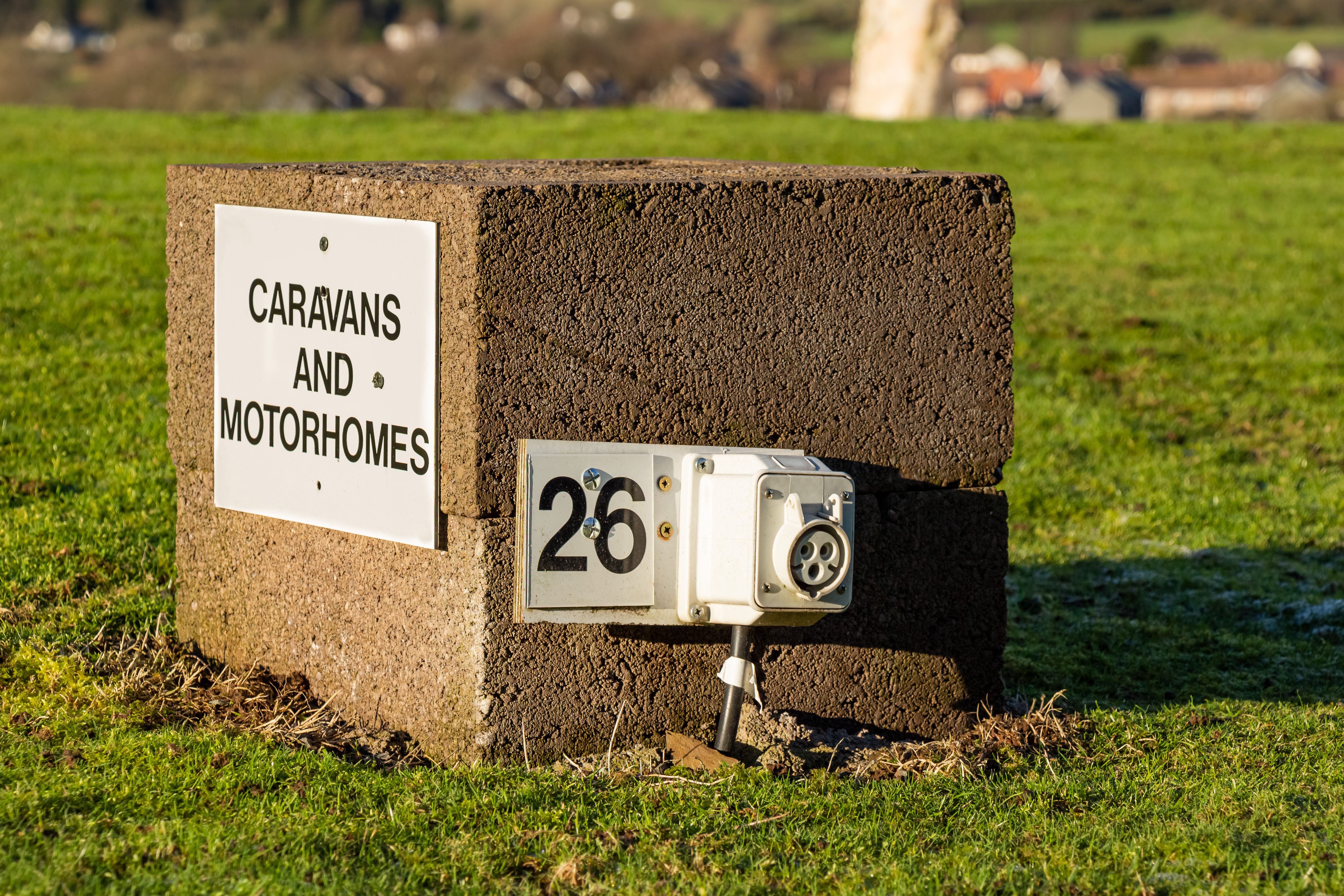 Planning power usage will be essential if you have a 30 amp RV or only have access to a 30 amp source. 50 amp RVs can produce exponentially more power than 30 amps, so the chances of overusing power are less, but there is a limit nonetheless. You can determine whether you have a 30 or 50 amp RV by looking at the shore power plug. 30 amp plugs have three prongs - a 120V hot wire, ground wire, and neutral wire, whereas 50 amp plugs have four prongs - two 120V hot wires, a ground wire, and a neutral wire. The 50 amp is able to more than triple the amount of available power due to split-phase wiring, but that is outside of the scope of this article. Just know that there is a substantial drop in power from a 50 amp hookup to a 30 amp.
Planning power usage will be essential if you have a 30 amp RV or only have access to a 30 amp source. 50 amp RVs can produce exponentially more power than 30 amps, so the chances of overusing power are less, but there is a limit nonetheless. You can determine whether you have a 30 or 50 amp RV by looking at the shore power plug. 30 amp plugs have three prongs - a 120V hot wire, ground wire, and neutral wire, whereas 50 amp plugs have four prongs - two 120V hot wires, a ground wire, and a neutral wire. The 50 amp is able to more than triple the amount of available power due to split-phase wiring, but that is outside of the scope of this article. Just know that there is a substantial drop in power from a 50 amp hookup to a 30 amp.
Though 50 amp plugs are becoming the new standard as RV power usage needs increase, not every campground will have 50 amp plugs available. Typically, older state parks and campgrounds are where this may be an issue, but you can always call ahead and ask! If this is the case, adapters are available to connect your 50 amp plug into a 30 amp source, but it will affect the amount of available power.
Power Requirements
All appliances should have a power requirement label somewhere on the item, which will typically tell you the running voltage, wattage, and amp draw. The total wattage used in your RV, which you would determine by adding up the wattage for all appliances that will be running, cannot be greater than the total wattage available from the electrical hookup, accounting for amperage.
The power coming through the electrical pedestal at the campground or wherever else you may be able to connect to grid power will be AC. RVs almost always have a converter that transforms AC power to DC power to supply compatible charges to the DC coach and chassis system.
Always use extreme caution when working with electricity and if you are unsure of what you're doing, seek the help of an experienced RV electrical technician.
Recent Posts
-
How to Keep Your Pets Safe While Camping
RVing and camping are a great getaway from the hustle and bustle of work and the city and the day-to …Jul 2nd 2024 -
Why Replace Your RV Furniture?
You may wonder when is the best time to replace your RV furniture. There is no one right answer to t …May 20th 2024 -
Can You Put Regular Furniture in an RV?
Many new and old RV owners ask themselves this question when they feel the need to update th …Apr 25th 2024 -
4 Tips for Securing RV Furniture While Traveling | RecPro
How To Secure RV Furniture There are few things that beat going out on an adventure with an RV …Apr 25th 2024 -
How To Keep RV Furniture From Peeling
Peeling RV Furniture | Why it Peels and How to Stop it Your RV furniture is a point of pride on yo …Apr 25th 2024 -
Turning up the Heat With an RV Fireplace
There’s an unlimited number of cool and exciting features you could add to your recreational vehicle …Apr 25th 2024

